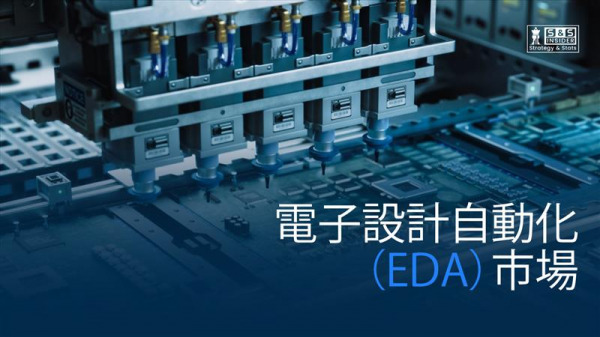The electronic design automation (EDA) market continues to expand strongly, driven by accelerating semiconductor innovation, AI-driven chip design, and increasing automation in electronics manufacturing.
This market is expected to be valued at USD 14.66 billion in 2023 and reach USD 32.75 billion by 2032, growing at a compound annual growth rate (CAGR) of 9.35% from 2024 to 2032.
As integrated circuits evolve and chip architectures become increasingly complex, the demand for advanced design automation tools is rapidly increasing across industries.
As the semiconductor ecosystem evolves, the adoption of EDA tools at the design, verification, and test stages is essential to maintaining production efficiency, reducing errors, and speeding product launches. As electronic systems become smaller, faster, and more intelligent, EDA solutions play a key role in supporting the efficient design of next-generation chips and devices. Get a
free sample report here: https://www.snsinsider.com/sample-request/2102

Technological Innovation Drives the Expansion of the Electronic Design Automation Market
. The EDA market is driven by advances in semiconductor manufacturing technology, the Internet of Things (IoT), artificial intelligence (AI), and 5G communications.
Design complexity is increasing as both consumer and industrial applications demand higher performance and lower power consumption in chips. EDA tools with AI and machine learning (ML) capabilities are helping engineers optimize performance, detect design defects early, and reduce time to market. Furthermore
, the increasing integration of system-on-chip (SoC) architectures is driving demand for simulation and verification solutions. Companies are leveraging cloud-based EDA platforms to enable global collaboration and streamline workflows.
Leading companies, including Synopsys, Cadence Design Systems, Siemens EDA, and Ansys, are increasing their investments in AI-driven automation, cloud-enabled EDA frameworks, and advanced verification technologies to address modern chip design challenges.
Semiconductor Innovation Drives the EDA Market
. The EDA market is closely linked to the semiconductor industry's technological innovation cycle.
The rise of cutting-edge technologies such as 3D ICs, quantum computing, autonomous vehicles, and edge AI is driving the need for advanced EDA tools. As transistor density increases and geometries shrink, manual design methods are no longer practical. EDA platforms automate layout, synthesis, and verification processes, ensuring accuracy and scalability in chip development.
Semiconductor manufacturers use EDA software to manage design data in an integrated manner, incorporate third-party intellectual property (IP), and simulate real-world operating environments. The introduction of machine learning into design automation enables predictive modeling and error detection, contributing to increased productivity and cost reduction.
Cloud-Based Solutions Transform the Market:
The adoption of cloud platforms is transforming the EDA market.
Cloud-enabled EDA solutions are replacing traditional on-premise systems, enabling seamless collaboration among geographically dispersed design teams. This is particularly beneficial for startups and small and medium-sized design companies that want access to high-performance computing resources without large infrastructure investments.
Cloud-based EDA tools also support a continuous integration/delivery (CI/CD) model, enabling rapid prototyping and design iterations.
Additionally, amid growing concerns about cybersecurity and data integrity, leading EDA vendors are enhancing encryption technologies and compliance features to enable secure cloud-based design collaboration.
For more information, please visit: https://www.snsinsider.com/reports/electronic-design-automation-market-2102
Regional Analysis: Asia-Pacific Leads the Market:
Asia-Pacific is expected to hold the largest market share by 2023.
Countries such as China, Japan, South Korea, and Taiwan are major semiconductor manufacturing hubs, significantly driving demand for EDA software and design verification tools. The rapid adoption of 5G, IoT, and consumer electronics in these countries is creating opportunities for EDA vendors.
North America is the second largest market, home to major chip design companies and EDA solution providers. The United States, in particular, is a center of innovation, driven by active investments in AI-enabled design automation and advanced node development. Meanwhile
, Europe is seeing steady growth, led by Germany and the Netherlands, as policies aimed at strengthening semiconductor self-sufficiency and supporting automotive chip development are being implemented.
Market Challenges: Cost, Complexity, and Talent Shortage
. Despite promising growth prospects, the EDA market faces challenges such as high software costs and verification complexity in advanced-node designs.
Integrating multiple IP cores, power optimization, and thermal management pose significant challenges for designers. Furthermore, the global shortage of semiconductor design engineers is spurring demand for shorter product development cycles.
Furthermore, with the widespread adoption of cloud-based EDA, intellectual property protection and data security have become urgent issues. Collaboration between EDA vendors, semiconductor foundries, and research institutions is essential to build a robust and efficient design ecosystem.
Future Outlook
: The EDA market is expected to grow further due to the increasing adoption of AI-driven design workflows and simulation technologies.
The convergence of automation, data analytics, and cloud computing is redefining chip design methods, enabling both performance and reliability. With the evolution of AI processors, automotive chips, and consumer electronics, EDA solutions will play a central role in supporting the next generation of digital transformation.
Furthermore, government policies to strengthen the semiconductor industry are also driving market growth. Collaborative research between academic institutions, semiconductor companies, and EDA vendors is expected to accelerate innovation in the electronic design and test fields.
Conclusion
The electronic design automation market is driving technological innovation at the forefront of semiconductor design, verification, and manufacturing. It
is expected to reach USD 32.75 billion by 2032, maintaining a compound annual growth rate of 9.35%, demonstrating the increasing interdependence between hardware innovation and design automation.
As the electronics industry embraces AI, IoT, and next-generation communications, EDA tools will continue to shape the future of intelligent systems, supporting increased innovation, precision, and competitiveness.
関連レポートはこちら:
電子料金収受システム(ETC)市場:https://www.snsinsider.com/reports/electronic-toll-collection-market-2590
医療用電子機器市場:https://www.snsinsider.com/reports/medical-electronic-market-2840
配信元企業:SNS INSIDER PVT. LTD.
プレスリリース詳細へ
ドリームニューストップへ

